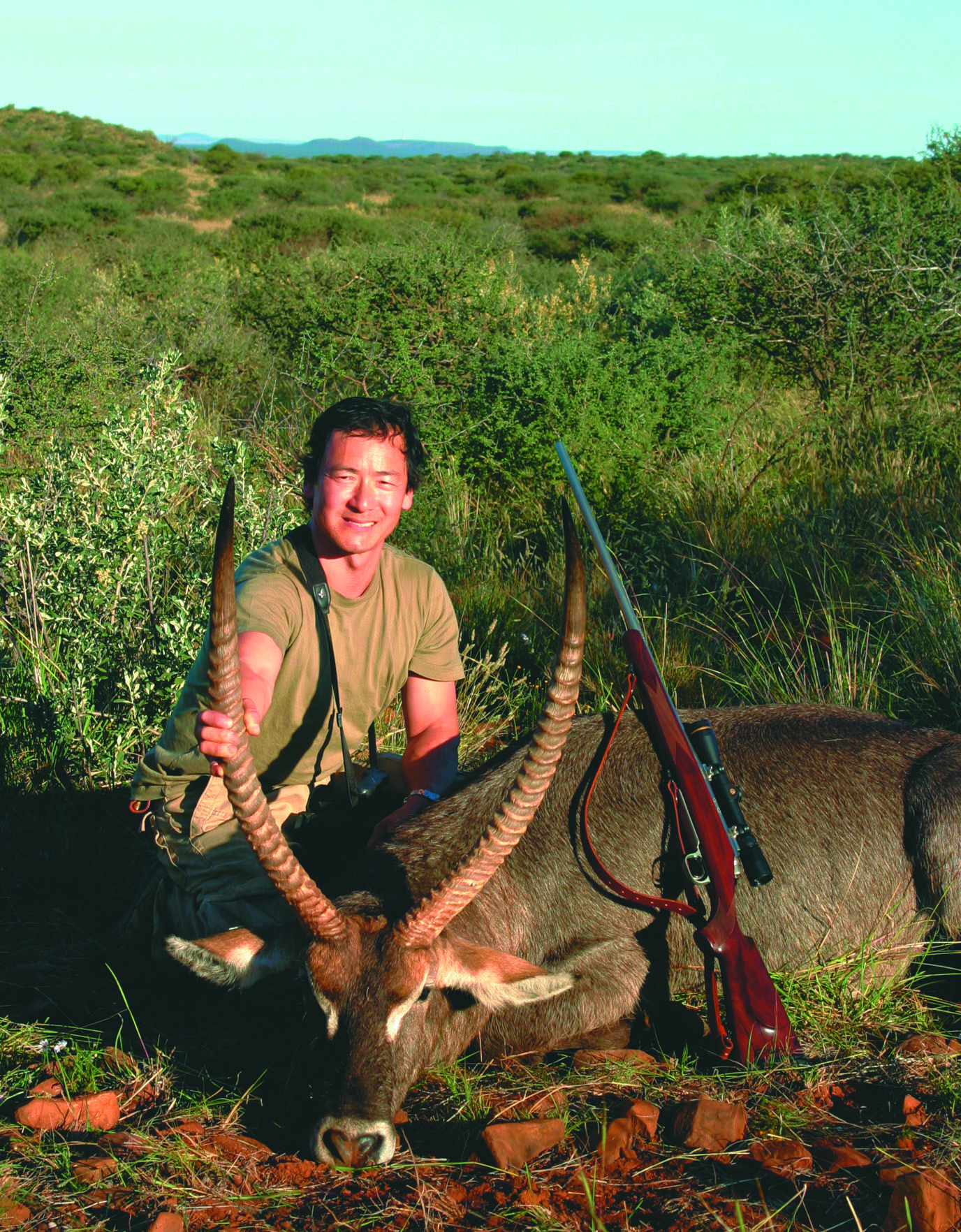.338 Winchester Magnum
Bench Topics
other By: John Barsness | December, 25
The .338 Winchester Magnum is the most popular North American "medium" (as the British call cartridges between .30 and .40 caliber). Hunters who believe in larger bores and heavier bullets like it for elk, and it's also often found in the hands of moose and grizzly/brown bear hunters. Even many brown bear guides carry rifles chambered in .338 when backing up clients. Many Americans also take the .338 to Africa, for use on the wide variety of "plains game" from 400 pounds on up to eland, which can weigh an honest ton.
I must admit to a certain ambivalence toward the .338 – and I have used the cartridge considerably, both in North America and Africa. On the one hand it is definitely a fine big game cartridge. Every animal I ever aimed it at correctly went down promptly, from whitetails and mule deer to African eland and Alaskan moose. On the other hand, it's more cartridge than most hunting requires, and it definitely isn't as effective on large, dangerous game as anything from the .375 H&H up.
The .338 was pretty much the product of Elmer Keith (1899- 1984), a widely read American gun writer who developed several

The original factory loads for the .338 used cup-and-core bullets weighing 200, 250 and 300 grains. Elmer Keith could see no use for the 200-grain, but apparently Winchester believed some hunters would use it on deer sized game. But the .338 appeared in 1958, 10 years after the Nosler Partition was invented. Serious hunters were catching on to the fact that better bullets meant smaller cartridges could be very effective on larger game.
Elmer Keith never "got" the Nosler Partition. Oh, he admitted it did work pretty well, but the heaviest .338 Partition weighed 250 grains, and Keith preferred heavier bullets. (This blind faith in bullet weight ultimately got ridiculous, when Keith took one of his .33 wildcats to Africa with some thin jacketed 300-grain bullets that failed to penetrate deer-sized antelope. He continued to insist that a 300-grain .33 bullet was perfect for such use.)
The "premium" bullet revolution has continued in the nearly half-century the .338 has been around – the reason that today most hunters who like the .338 most often use bullets in the 210- to 225-grain range. These shoot flatter, penetrate just as deeply (or even deeper) than Keith's 275- to 300-grain bullets, and create less recoil.
This is all good. But do we really need the .338 for most hunting? No, not even for elk and moose or similar-sized African plains game. A 7mm or .30-caliber cartridge will do the same jobs the .338 used to do, due to better bullets, and most hunters can shoot a 7mm or .30 more accurately than they can a .338, due to less recoil. Good bullets in the right place mean clean kills.
Even so, many hunters carry the .338, and firmly believe in its superiority. Many of these, however, do not really understand the cartridge. They think because it has a "magnum" case, that only slow-burning powders will be effective. This is halfright. The .338 is really an oversized .30-06, with just about exactly the same powder-capacity- to-bore ratio. Thus with lighter bullets, somewhat faster powders often work best.
Here are some of my favorite loads for the .338: a 200-grain bullet for deer hunting: 60.0 grains of IMR-4895. This produces around 2,700 fps in most rifles and kicks a lot less than full-power loads. Conventional cup-and-core bullets also behave better at this velocity level. A 210-grain bullet for long-range big game: 65.0 grains of Alliant Reloder 15. This produces over 2,900 fps and is a marvelous allaround load for all but big, dangerous game. A 225-grain bullet: 72.0 grains of Alliant Reloder 19, for 2,800+ fps. Given the same bullet construction, it penetrates better than any lighter bullet, yet recoil is not all that bad and trajectory reasonably flat. This may be the best allaround bullet weight for the .338 today. A 250-grain bullet: 67.0 grains of Ramshot Hunter. At around 2,650 fps, this pretty much duplicates the factory 250-grain load.
While I have taken quite a bit of game with 250-grain bullets in the
.338, especially with the 250-grain Nosler Partition, recoil starts to
be punishing in light hunting rifles, and all that penetration really
isn't necessary for most hunting. The 250's are most suitable for
dangerous game. This article was used by permission from LoadData.com.

